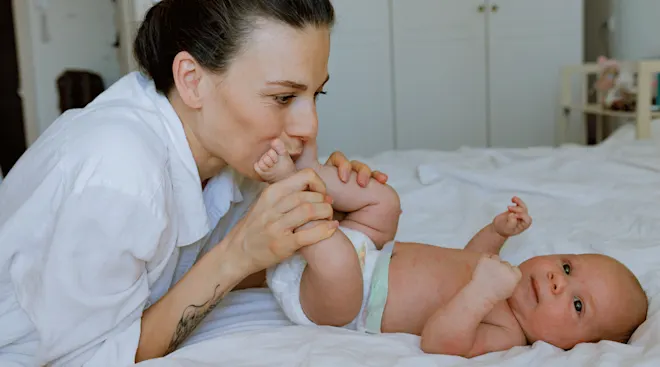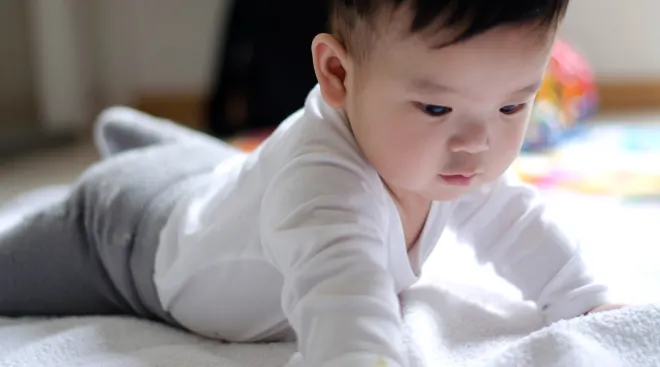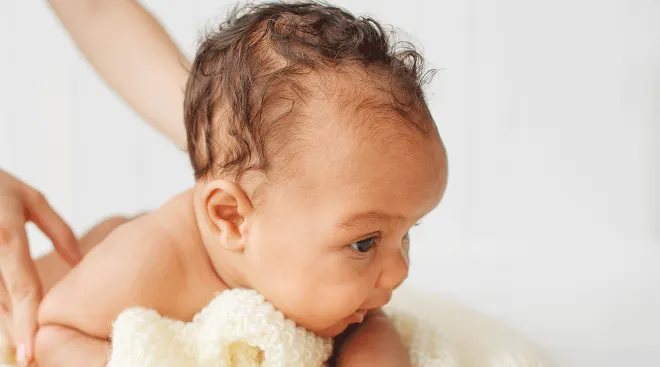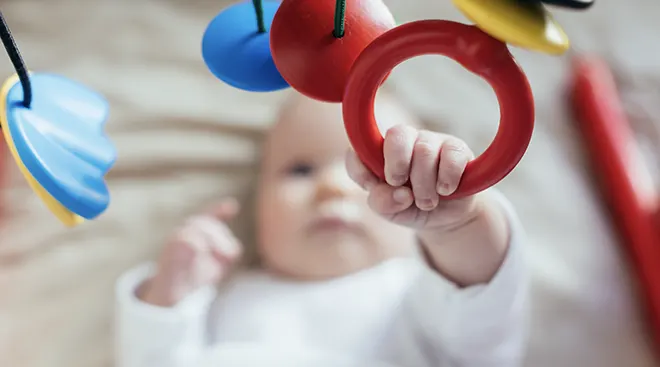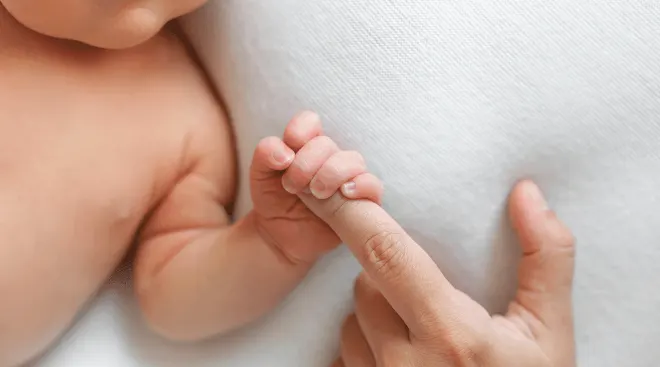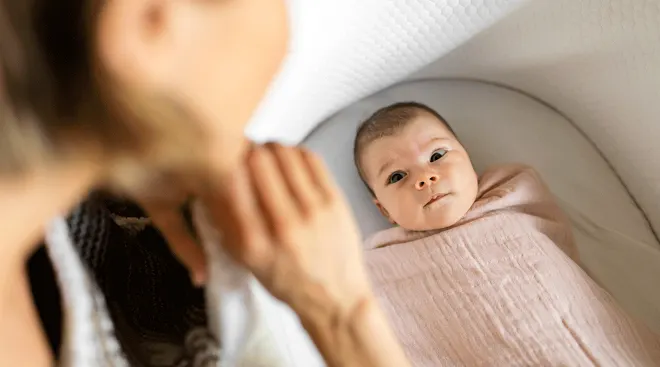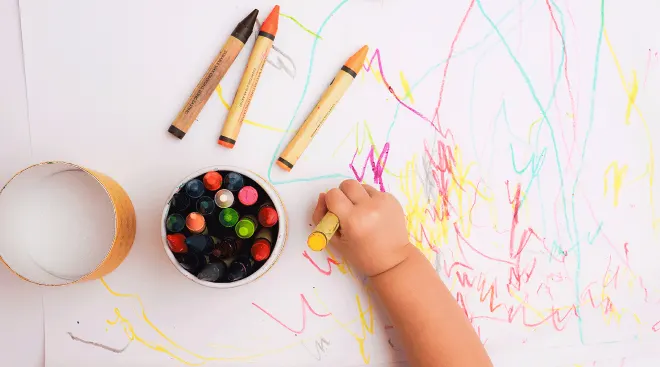What Is the Pincer Grasp?
Baby is learning new skills pretty much every day. Of course, you want to do what you can to encourage their development. One of the early and most important physical milestones they’ll meet? Mastering the pincer grasp. This fine-motor movement is crucial to baby’s development, as it’s something they’ll use regularly throughout life. But exactly what is the pincer grasp, when does it develop and what can you do to encourage baby along the way? Here, pediatricians weigh in on pincer grasp age, activities and more.
The pincer grasp is a fine motor skill that involves “using the thumb and a finger—usually the index finger—to pick up objects,” explains Brittany Chan, MD, FAAP, a pediatrician with Texas Children’s Pediatrics. While the pincer grasp may seem like a relatively minor fine motor skill, it’s considered an important developmental milestone, as it demonstrates baby’s budding hand control and coordination. “It’s like building a miniature toolbox of fine motor skills, opening up a world of possibilities for exploration and learning,” says Daniel Ganjian, MD, a pediatrician at Providence Saint John’s Health Center in Santa Monica, California.
In toddlerhood, the pincer grasp encourages self-feeding, but later in childhood, it helps kids learn how to hold a pencil or tie their shoes, Chan says. What’s more, adults use the pincer grasp regularly to do routine things like plug in their phones or fasten a button. “This seemingly simple skill lays the foundation for many everyday activities,” Ganjian adds. “It also helps with hand-eye coordination and sensory development.”
You may notice baby using the pincer grasp one day, but this isn’t something that develops overnight. In fact, throughout their first year of life, baby will go through a few types of grasps before they learn to pick things up with their thumb and forefinger. Basically, the ability to grasp first emerges in the newborn days and evolves—eventually leading to the pincer grasp—until baby is about one-year-old. Keep reading to learn about the pincer grasp age and how baby will get there.
The pincer grasp is a work in progress for a while. Here are the various stages of pincer grasp development.
- Palmar grasp: This is when babies use their entire palm to scoop an object up, Ganjian says. It usually emerges some time in newbornhood, and they generally continue to use this early grasp for their first five to six months.
- Raking grasp: The raking grasp is when baby uses all of their fingers to “rake” an object into the palm of their hand, says Michael Bauer, MD, pediatrician and medical director at Northwestern Medicine Lake Forest Hospital in Illinois. It typically emerges around the time baby is 6 or 7 months old.
- Crude or inferior pincer grasp: In this next stage of pincer grasp development, baby “begins to use the pads of their finger and thumb to grasp an object,” Bauer says. This stage typically emerges between 9 to 10 months, but may show up as early as 7 months. “It may look a bit awkward, but it’s a big step forward,” Ganjian adds.
- Superior pincer grasp: This is the last stage of baby’s pincer grasp development. “The superior pincer grasp is achieved once they’re able to use the fingertips to accomplish the task,” Bauer says. This stage usually occurs around the time baby is 11 to 12 months old, but, again, may be seen earlier around 9 months.
If baby isn’t hitting these milestones on this exact schedule, don’t panic. “As with most developmental milestones, there’s a range of time for this to develop,” Bauer says. And, of course, every child is different. If you’re ever concerned, don’t hesitate to reach out to your pediatrician.
If you want to speed up baby’s pincer grasp development, or are concerned that your little one is lagging behind, experts say there are a few things you can try to encourage the skill:
- Put finger foods within reach. “Finger foods, such as Cheerios and puffs, are a great way to encourage babies to use the pincer grasp,” Bauer says. Of course, always avoid any hard foods and choking hazards, and ensure baby’s mealtimes are supervised, Chan says.
- Engage in productive play. Stacking toys and building blocks help baby develop their pincer grasp, Bauer notes. You might also introduce them to smaller objects, like crayons or markers, to practice holding and playing with.
- Try sensory play. “Let them explore different textures and shapes with their hands,” advises Ganjian. Give them squishy balls, crinkly paper, finger paints or other household items baby can safely touch and squeeze.
- Get an activity board. Activity centers and boards encourage baby’s use of the pincer grasp, as they often include things that need precise finger movements, like buttons and switches. “[These] are fun for babies, help them exercise their fine motor skills and use their hands and fingers to manipulate objects,” Chan says. “Babies can also practice grasping [and pulling] the string on a pull toy.”
- Steer clear of screens. Bauer strongly recommends avoiding phones and tablets for babies and toddlers, which usually require no more than a touch or swipe. “These can actually interfere with the development of these fine motor skills,” he says.
While all of these pincer grasp activities can help baby’s development, if you don’t have the time or energy to do all of them every day (what parent does?), that’s completely okay. “Most infants will develop [the pincer grasp] on their own,” Bauer stresses. Ganjian reiterates this sentiment: “Remember, every baby develops at their own pace. Be patient, celebrate their progress and, most importantly, have fun together.”
Please note: The Bump and the materials and information it contains are not intended to, and do not constitute, medical or other health advice or diagnosis and should not be used as such. You should always consult with a qualified physician or health professional about your specific circumstances.
Plus, more from The Bump:
Michael D. Bauer, MD, is a medical director and pediatrician at Northwestern Medicine Lake Forest Hospital in Illinois. He also serves as a clinical assistant professor at Northwestern’s Feinberg School of Medicine. He earned his medical degree at University of Illinois at Chicago College of Medicine and completed his residency at Advocate Health Care.
Brittany Chan, MD, FAAP, is a pediatrician with Texas Children’s Pediatrics. She earned her medical degree from Texas Tech University Health Sciences Center and completed her residency in pediatrics at Stanford University School of Medicine.
Daniel Ganjian, MD, is a pediatrician at Providence Saint John's Health Center in Santa Monica, California. He received his bachelor's degree from the University of California, Los Angeles; his medical degree from the University of California, Irvine; and completed his residency at Harbor-UCLA Medical Center and Maria Fareri Children's Hospital in New York.
Learn how we ensure the accuracy of our content through our editorial and medical review process.
Navigate forward to interact with the calendar and select a date. Press the question mark key to get the keyboard shortcuts for changing dates.

































